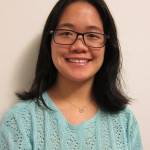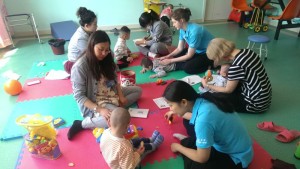Inner Mongolia is a world away from the metropolises that I’ve lived in. This province gave me a sense of peace that I haven’t experienced since moving to Shanghai this winter. Within this province, we visited the special needs classroom at an orphanage. This was the first orphanage I’ve ever visited, as orphanages do not exist in Canada. The orphanage exuded a warmth and love in its brightly colored walls and rooms, and the ayis’ teachable attitudes, however the charm that this orphanage held lay within the bright smiles of each of its children.
After an 8 hour, overnight train ride, our team (2 speech-language pathologists and an administrative staff member who is in training to be a speech therapy assistant) arrived in the city where the orphanage was located (specific details about this orphanage are not provided at the request of the orphanage). There we met up with our SLP lead from Shanghai and our contacts from the orphanage. Although we had no formal schedule for therapy or training for our visit to the orphanage, we were all eager to meet the children and the ayis… and to determine just how we could be of use to the orphanage.
Within the first 30 minutes of arriving at the orphanage, we had set up an observation and training schedule. The children’s ages ranged from a few months to 8 years old, presenting with cerebral palsy, Down Syndrome, cleft lip and palate, and global developmental delays.
We spent the first day observing how the ayis interacted with and taught the children in the two therapy rooms, and observing the foster families. The second day was spent providing specific feeding and early language stimulation strategies and training to the ayis and foster families. The evenings were spent debriefing and planning for the following day. It was a busy two days!
The highlight of my first trip to this orphanage was spending time playing and practicing my early language stimulation skills with the children. As a new speech therapist, I was amazed at how using early language stimulation strategies actually elicits more sounds and interaction from the children. Although all of the children were nonverbal, each of them found alternate ways to connect with me. The key was to find and to elicit the appropriate level of communication, be it a laugh, eye contact, or a sound. It was my greatest joy to see their eyes light up and their joyous laughter when they connected with me and with others.
I am looking forward to returning to Inner Mongolia and seeing the children’s bright smiles again!









